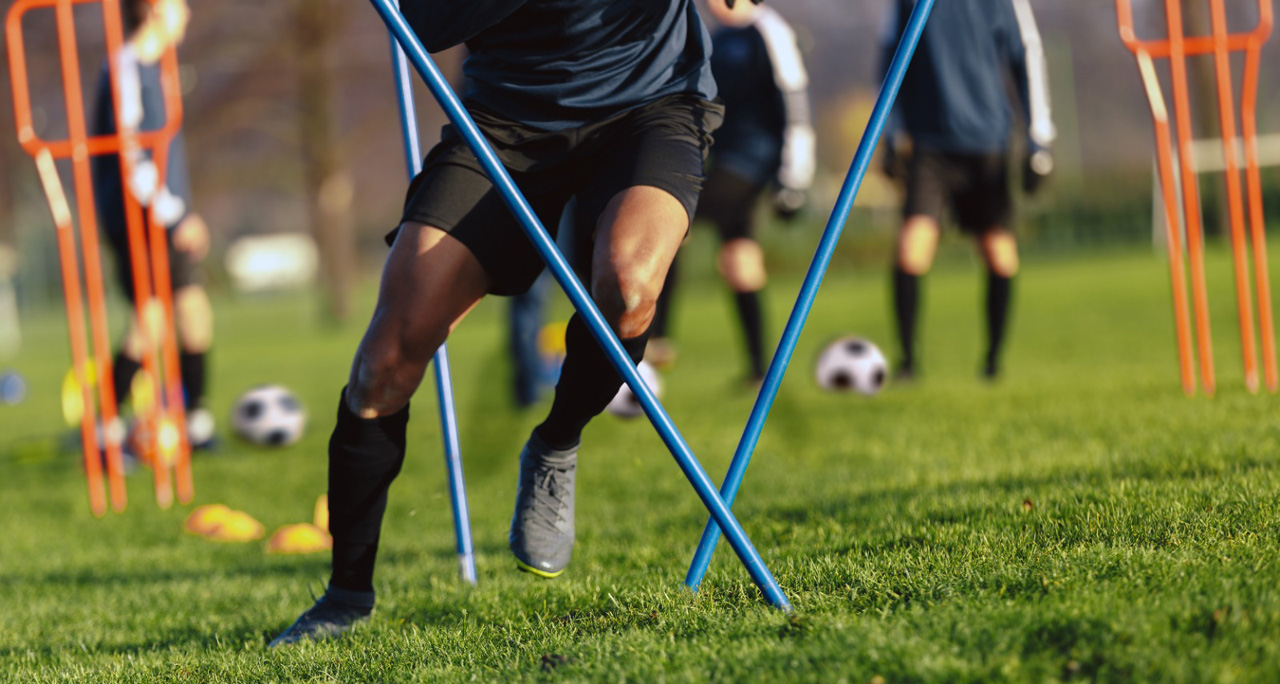Soccer warm up
- light jogging across the field
- various running exercises, including running with a hip lift, with an overlap of the lower leg, side steps, etc.
- stretching for all muscle groups
There are a range of different exercises with cones. All of these exercises are aimed at improving dribbling technique and ball handling. The cones are placed in different combinations and the coaches instruct players how to maneuver around the cones with the ball. Often these drills are timed or played against one or a number of other players.
Prior to any tactical training, one must develop their ball handling skills. These drills are repeated at every training session. This is so that the player develops this skill to a point that it is done without conscious thought. This allows the player to focus on the game at hand, the players on the field and the execution of their tactical training.
One of the most common and effective exercises the square drill. The essence of the square drill is to mimic a game on a smaller scale. One set of players are located on the perimeter forming a square while the opposing players are inside that square. The main purpose of this drill is for the players inside the square to take the ball away from the players on the perimeter who must constantly pass the ball between themselves to maintain possession. The coach may introduce additional rules to further complicate the drill.
For this exercise, players are divided into two equal teams and are allowed to move freely in the designated area. The goal of each team is to keep control of the ball for as long as possible. When the ball is taken away, the roles are reversed. The coach may also make it more challenging by introducing more rules such as limiting the number of touches each player may take.
Smaller groups are created from the larger main group. The smaller group may consist of 6v6, 7v7 and so on. This training drill requires a smaller field and consequently smaller goals marked by cones or gates. The aim for the players on each team is to score as many goals against their opponents as possible. The challenge in this drill is the reduced dimension of the playing area and goal posts. As a rule, goalkeeper are not used in this format of the drill.
The principle of the game is the same as in the above exercise, only here teams are created with an even number of players. This creates pairs in which the players move together as a unit by holding hands. This is a great way to build rapport between players. In addition, it is a fun and challenging addition to training.
The soccer training plan also includes work in the gym. Today, football players are developed in a complex way. A good athlete should always be in shape, so strength training is a mandatory part of the training process. It is important to understand that physical conditioning is unique to each individual. A personal trainer can identify weaknesses and suggest the right exercises to bring the body into good physical shape.
- fast intellect for making clear and instant decisions
- explosive starting speed
- high speed running
Agility exercises are performed both with the ball and without. There are many drills for developing agility, but usually only a few of them are included in the training process. If a player has challenges with these drills, then the coaches work with them individually to improve those skills.
Striking technique drills from different positions need to be practiced. It is important to learn how to hit the ball correctly from both static and dynamic positions depending on different game situations. For this, there are special exercises.

